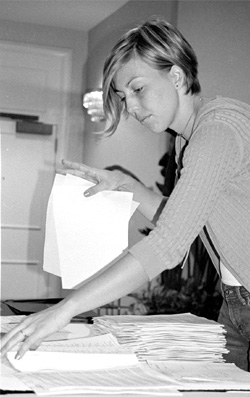Another group of conventioneers is descending upon the Big Easy, but in addition to collecting beads on Bourbon Street, they will be analyzing the ecology of the French Quarter and touring the diminishing wetlands.
Loyola is hosting the 13th annual Society of Environmental Journalists conference, which started Wednesday and runs through Sunday.
Robert Thomas, director of Loyola’s Center for Environmental Communications and co-chairman of the event, said that the center has been planning the conference for two years. Once the Society of Environmental Journalists accepted Loyola’s bid to host the weekend, the department went to work to raise part of the money to support the program.
Thomas said expected attendance is about 600 to 800 journalists from all over the world. He and co-chairman Mark Schleifstein, who covers the environmental beat for The Times-Picayune, made all local arrangements for the event.
Thomas also said the conference will raise awareness about ecological issues in Louisiana. Many local environmental problems, such as the receding wetlands, have not received much national attention.
Faculty member Lisa Boe, who helped Thomas with the arrangements, agreed.
“If you ask people around the country about the Everglades, they know all about it,” she said. Louisiana’s “wetlands do not get the same attention.”
Boe said that if an environmental problem does not seem to have national ramifications, it is difficult to receive money to combat the problem.
She said that environmental catastrophes in Louisiana need publicity so that they can get national recognition.
Schleifstein agreed that national awareness is needed to forward Louisiana’s efforts. He said that people do not understand that saving Louisiana’s natural treasures is important.
Boe said that environmental journalism serves to inform the public about serious environmental issues.
“It’s very complicated journalism,” she said. “Not only does an environmental journalist report the story, he also understands the science, the people and the
government action involved with the problem.”
In a letter to the journalists who will participate in the conference, university president Rev. Bernard Knoth, S.J., who approved the bid to sponsor the event, said that the journalists’ mission reflects the Jesuit spirituality that “rejoices in the beauty and wonder of our created world.”
Thomas said that the conference will give visibility to Loyola’s environmental journalism program.
Schleifstein said that the conference’s content is unusual for a journalism conference because of the environmental journalists’ accreditations.
“Usually at a conference, you have people telling you how to talk to others,” he said. “This is much different in that people we would be covering are talking to us.”
The conference will feature speakers on topics such as climate change and emerging disease, population growth, urban sprawl and bio-terrorism.
The conference attendees also will have the opportunity to take field trips to areas of environmental concern.
Although the focus is on the Louisiana wetlands, tours of garbage dumps, wildlife refuges, the French Quarter, the aquarium and chemical plants will be offered.
There also are pre- and post-conference trips to see the wetlands and to view offshore oil production. A reception at Blaine Kern’s Mardi Gras World is scheduled for Saturday night.

Loyola faculty member Lisa Boe passes out schedules and other conference information at the Astor Crowne Plaza Hotel. Loyola is hosting the Society of Environmental Journalists annual conference, with 600 to 800 members expected to be in attendance.






